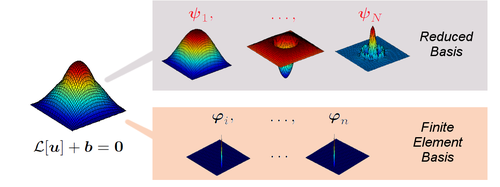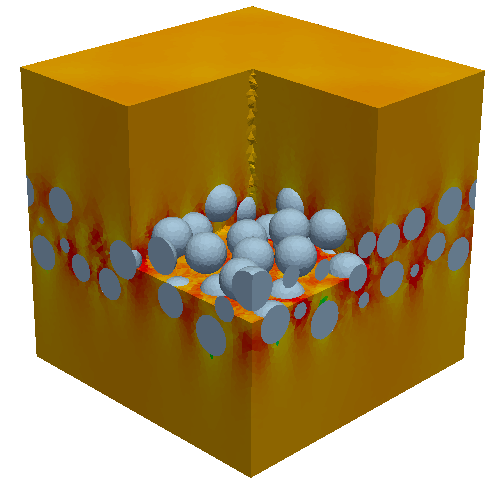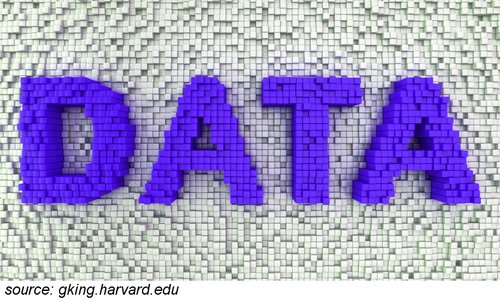 Scope
Scope
Microstructured materials can be found in most engineering applications. The geometrical features of the microstructure and the physical properties can show pronounced and non-trivial interactions. In order to better understand microstructured solids, predictive numerical simulation techniques have been established over the past three decades.
Today, these simulation techniques can be considered as settled and reliable, yet computationally extremely demanding. This precludes developers from applying dedicated micromechanical models in parametric studies, particularly, when the number of (e.g. physical or geometrical) parameters increases.
The suitability of reduced order models (ROM) for such parameterized problems has led to rapid and remarkable developments within the past 10 years. While the general approach for setting up ROM is nowadays mostly well-understood, the reliable treatment of nonlinear, path-dependent problems and the realization of multi-dimensional parametric studies remain major challenges.
The EUROMECH Colloquium 597 seeks to collect recent developments from the ROM community and, based on the joint knowledge, stimulate intense scientific exchange. The tentative aim of the colloquium is to build a better understanding of current capabilities and limitations of ROM .
Two main questions of – in our view – strong scientific impact will be addressed:

Error estimation and adaptive error control in ROM
The accuracy of reduced order models is often difficult to assess: Either, the computation of error measures is computationally unaffordable, or path-dependency of the problem hinders the definition of dedicated and accepted quantitative error measures. Even when error measures are available, challenging questions such as adaptive error control in ROM remain. All aspects associated to the error evaluation/estimation and control for classical and output oriented error measures form one scientific focus of the colloquium. The interdisciplinary exchange between the mathematical and the mechanical/engineering community is particularly appreciated.
 DATA-driven methods and ROM
DATA-driven methods and ROM
BIG DATA has started to massively influence todays developments in the field of simulation sciences. When complicated simulations and many thousands of different parameters are performed, the extraction of the essential information from the available information remains challenging. Further, the performance of data-based predictions and data-assisted simulations can excel direct numerical computations in many applications. The interation of dedicated ROM and DATA-driven methods is in our view a field with many ongoing developments.
The PDF version of the flyer for the EUROMECH Colloquium 597 can be downloaded here.
